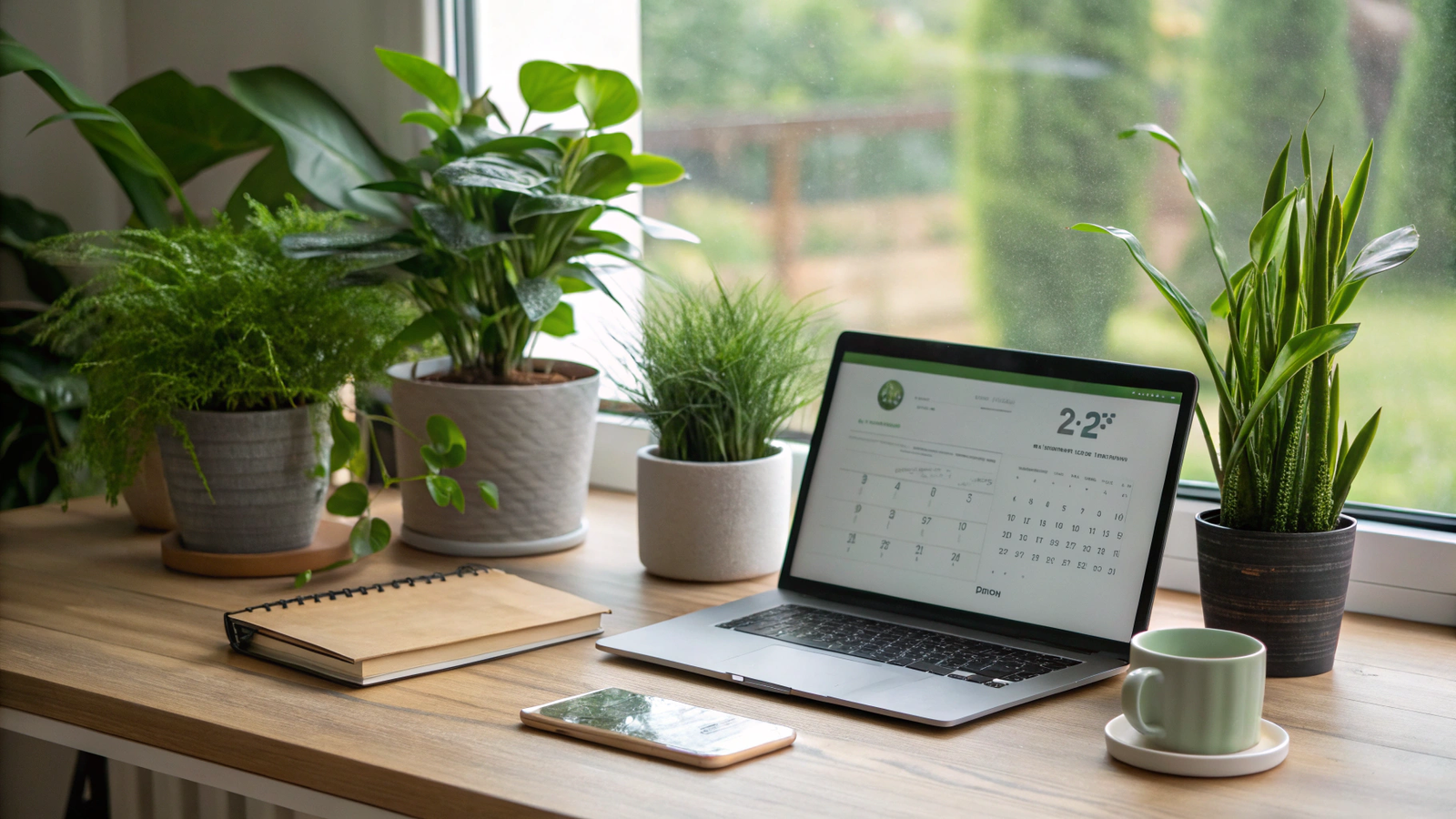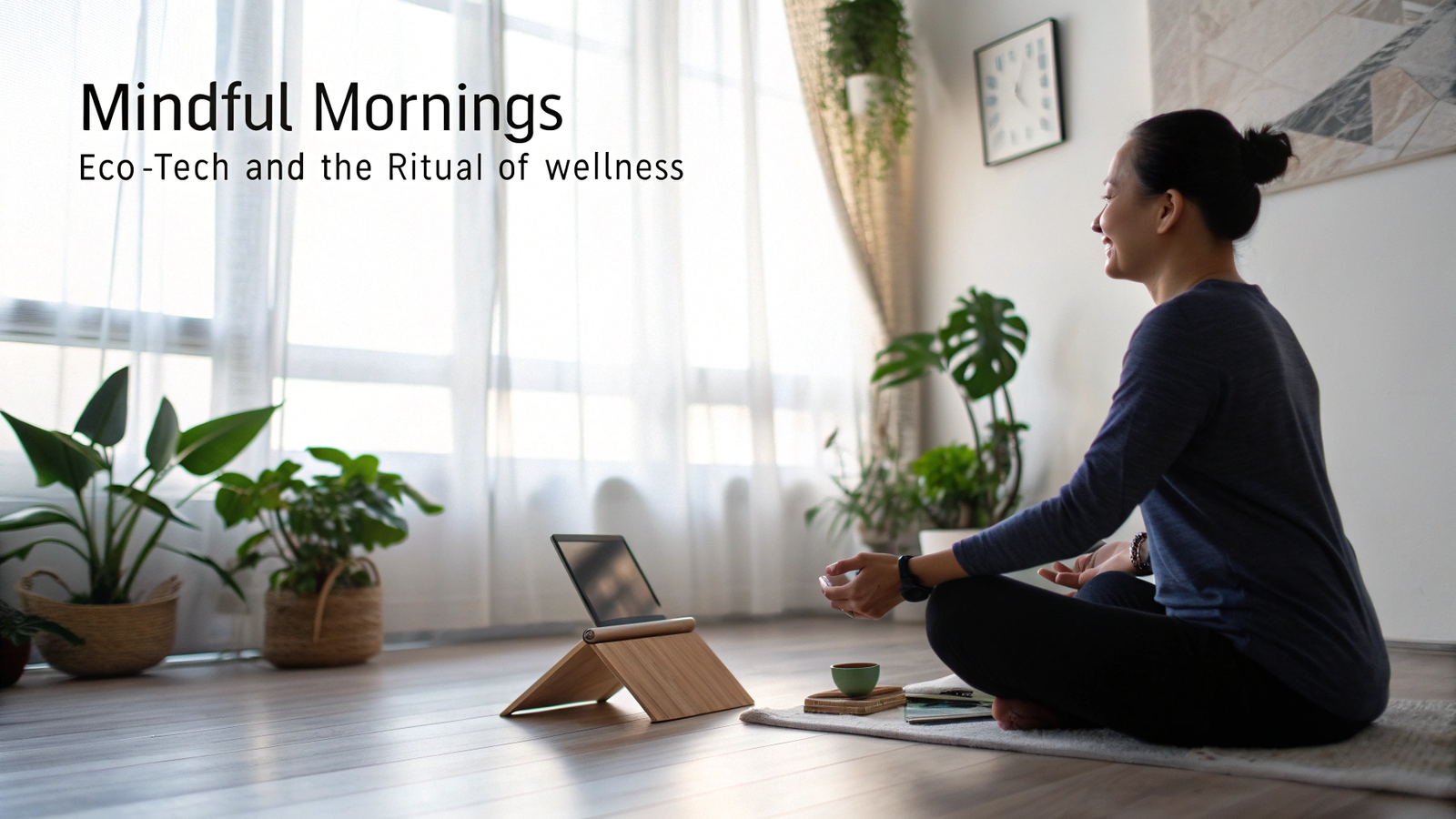Eco Every Day: How Sustainable Tech Shapes Our Daily Rituals
Introduction
In today’s hyper-connected world, many of our daily routines hinge on technology—starting the day with an alarm, brewing coffee, monitoring air quality, managing energy use, and even winding down with lights and entertainment. But as climate change worsens and e‑waste mounts, we find ourselves asking: can our everyday tech routines be more sustainable?
The answer is a resounding yes. That’s where sustainable tech steps in. These eco-conscious devices—energy-efficient smart gadgets, solar chargers, biodegradable accessories, and compost-ready appliances—are designed to shrink our environmental footprint without sacrificing convenience. They integrate seamlessly into our daily rituals while promoting resource efficiency, waste reduction, and mindful behavior.
Let’s explore how sustainable tech is reshaping everyday life across every major daily ritual.
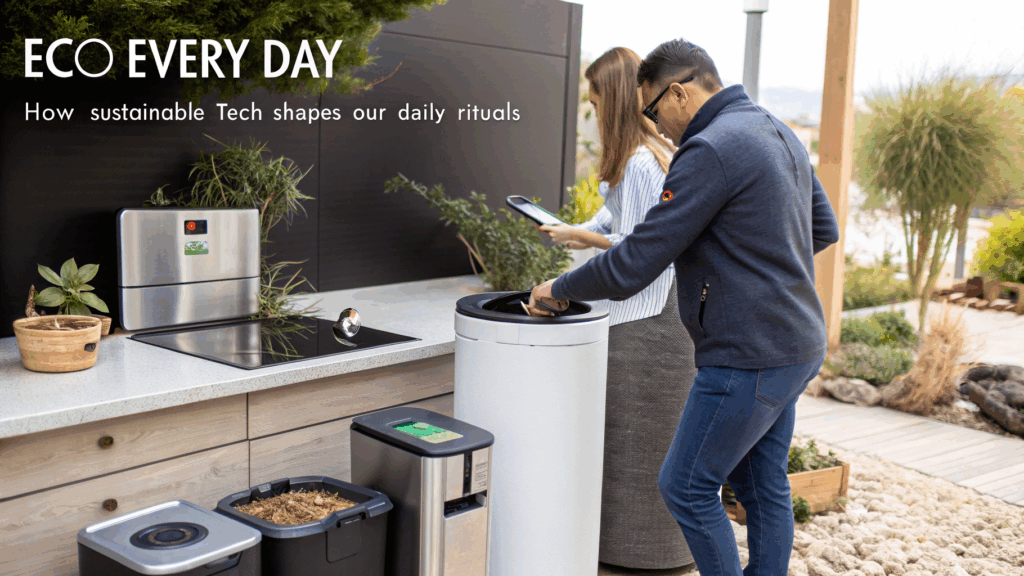
1. Morning Rituals: Green Starts to the Day
a. Solar Chargers and Self-Powering Devices
Imagine leaving your phone charging near a window and waking up to a full battery—all powered by sunlight. Innovations like Exeger’s Powerfoyle solar cells now enable devices such as self-charging headphones, speakers, and even smart‑home sensors to harvest solar energy—not just calculators or niche wearables thingsmate.com+2Medium+2Green Is A Lifestyle+2TechRadar. Starting your day with devices ready and charged from solar power removes reliance on grid electricity and showcases how even the simplest morning habit can go green.
b. Smart Coffee Makers and Kitchen Eco-Tech
Kitchen rituals offer more opportunities for sustainability. Consider systems like the Frescopod compost‑filter coffee maker, which uses biodegradable pods and produces minimal waste Gadget Flow. Or countertop appliances like the Lomi food upcycler, which turns food scraps into nutrient-rich compost in under 5 hours using just 0.6 kWh—ideal for composting kitchen waste gearsphere.tech. These gadgets elevate everyday chores into eco-conscious acts, integrating composting and renewable energy into the breakfast routine.
2. Daily Energy Habits: Smart Devices in Action
a. Smart Thermostats, Lighting & Power Management
Devices like the Nest Learning Thermostat or Ecobee SmartThermostat learn user patterns, optimize heating/cooling, reduce energy waste, and can cut utility bills by up to 20% TIME+7Medium+7gearsphere.tech+7. Paired with LED smart lights (e.g., Philips Hue), which use up to 80% less energy and offer scheduling via apps or voice gearsphere.tech, these systems seamlessly manage energy consumption throughout the day.
Add smart plugs and energy-monitoring outlets, and users can discover which devices run vampire power in standby mode—then schedule or remotely turn them off Lifewire+1gearsphere.tech+1thingsmate.com. Together, these tools form a tech-based eco-habit loop: assessing, automating, and optimizing daily power use.
b. Home Automation Intelligence
AI-enabled smart homes now anticipate needs—adjusting lighting, music, air quality, or cleaning routines based on presence, voice, or behavioral patterns Homes and Gardens+15Homes and Gardens+15Medium+15. Imagine automated blinds closing to reduce heat, cleaning robots scheduling themselves based on usage, or air purifiers running only when air quality dips. These technologies work behind the scene, embedding eco-efficiency into daily comfort and ambience.
3. Midday and Work Rituals: Conscious Tech at Play

a. Smart Workspaces and Efficiency
At home or the office, energy‑efficient laptops, monitors, and peripherals help reduce daily energy demand. Devices like the Dell XPS 13 AI‑powered laptop and the HP Elite Dragonfly are designed for low power consumption without sacrificing performance Colour My Tech.
Moreover, installing smart sensors, especially IoT-based ones, allows real-time monitoring of energy patterns and indoor conditions (e.g., temperature, humidity, lighting) AsterraarXiv. This data supports automated adjustments or user notifications to turn off unused lights or devices, making sustainable behavior effortless.
b. Green-Friendly Office Tools
Accessories and peripherals also go eco-conscious:
- Biodegradable phone or laptop cases made from wheat straw, bamboo, or cornstarch—ideal for daily protection with minimal waste Colour My Tech+1trendmind.net+1.
- Bamboo keyboards and amplifiers, which use zero electricity and naturally biodegrade Nowee – Think Again+1trendmind.net+1.
- Plantable notebooks and stationery embedded with seeds—once used, they can be planted to grow herbs or wildflowers Nowee – Think Again.
These items bring tangible sustainability to the “tools of the trade.”
4. Evening Wind-Down: Smart Comfort with Less Footprint
a. Smart Lighting and Ambient Tech
Evening rituals like reading, relaxing, or entertainment benefit from dimmable smart bulbs with scene automation. Philips Hue bulbs, for example, conserve electricity, reduce replacements, and adapt lighting to routine without manual effort Colour My Tech+14Green Is A Lifestyle+14Reddit+14. They integrate with virtual assistants to turn off unused lights based on voice or schedule.
b. Air Quality and Comfort via Passive and Smart Systems
Beyond devices, sustainable architectural elements contribute: passive cooling strategies like 3D‑printed ceramic “Cool Bricks” offer evaporative cooling without electricity—ideal for dry climates Homes and Gardens. Inside, AI-enhanced purifiers detect dust, allergens, and adjust operation only when needed Homes and Gardens. These systems create a healthy evening environment while minimizing power use.
5. Waste Management as Daily Routine
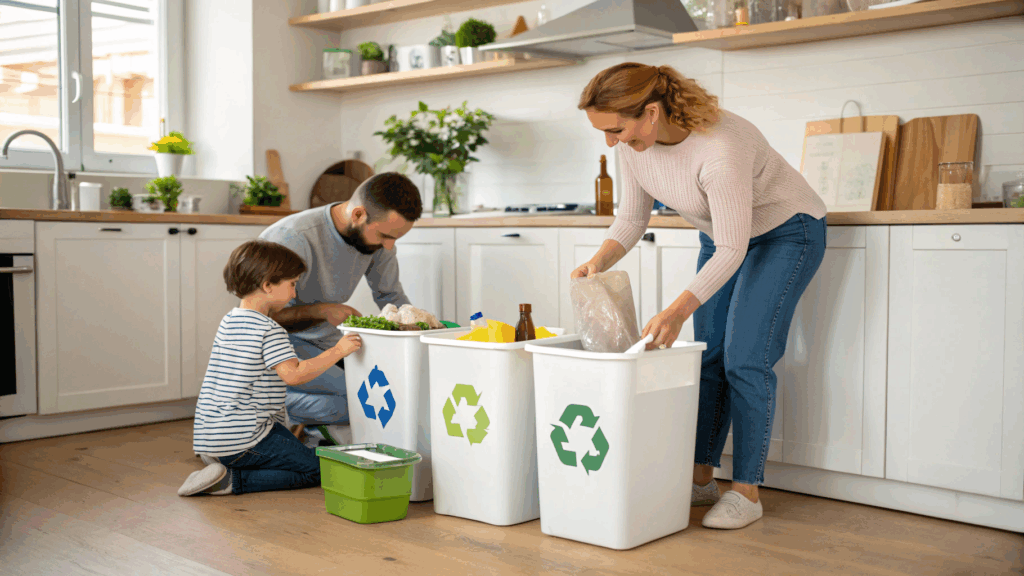
a. Smart Composting and Food Waste Reduction
Automatic composters such as KALEA kitchen composter connect to apps and convert food scraps quickly into compost Gadget Flow. Likewise, devices like Lomi transform dairy, meat, and general food waste into nutrient-rich compost with minimal energy gearsphere.tech. Integrating composting into everyday kitchen use normalizes waste reduction.
b. Repurposing and Upcycling
Instead of discarding old phones or tablets, users can upcycle them into home monitoring cameras, kitchen displays, or smart remotes—giving devices new roles in daily life Lifewire. This extends gadget lifespans and reduces e-waste, embedding eco-consciousness into everyday tech recycling habits.
6. Holistic Benefits: Why Eco Tech Transforms Rituals
a. Energy and Resource Savings
Each sustainable tech habit—be it charging with sunlight, using standby-free plugs, or AI-managed heating—leads to measurable resource savings. Smart thermostats alone can cut HVAC energy use by 20% Mediuminfogreenglobal.com. Cumulatively, smart lighting, charging, and automation significantly lower energy consumption.
b. Behavioral Awareness and Mindfulness
These gadgets also cultivate awareness. When smart plugs show energy-hogging devices or composters visualize waste reduction impact, users become more mindful. Behavioral data from IoT sensors helps users understand their daily resource patterns and encourages change arXivWikipedia.
c. Ease and Integration
The best sustainable tech is invisible—no extra effort, just integrated routines. Your home adjusts heating when you’re away, devices charge via sunlight without plugging in, lighting adapts to activity—all supporting comfort and eco-living.
7. Challenges and How to Overcome Them
Despite strong benefits, hurdles remain:
a. Cost and Accessibility
Sustainable products may carry higher costs. Solar‑charging devices, composters, or AI-enabled systems often require investment upfront. Making these accessible requires broader adoption, subsidies, or scaling manufacture.
b. Infrastructure and Recycling Gaps
Effective recycling or composting requires local facilities. In many parts of the world, these infrastructures are lacking, risking devices ending up in landfills even if designed to be recyclable Wikipedia.
c. Behavior Change Needs Support
Despite eco‑tech, sustainable routines require mindset shifts. Education, accessible tools, and motivation (like gamification in apps such as JouleBug or Oroeco) reinforce habits MediumNowee – Think Again.
8. Future Outlook: Smarter, Greener Rituals
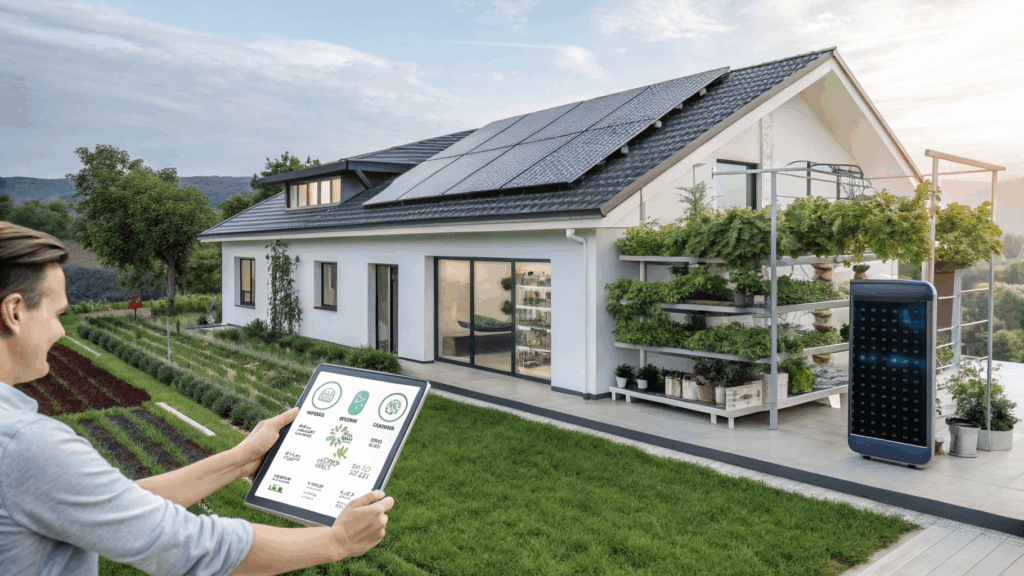
Emerging trends promise deeper integration:
- Energy‑harvesting wearable tech that charge via body heat or movement.
- Fully compostable electronics made of organic materials.
- Localized IoT-enabled zero‑energy homes integrating passive cooling, renewable power generation and smart control Colour My TechWikipedia.
- AI-based automation that anticipates routines—like ambient control, heating, and even cleaning—without user input Homes and Gardens.
These will turn sustainable tech from individual eco-gadgets into an embedded part of daily life architecture.
Conclusion
“Plug into the planet” is more than just a phrase—it’s an actionable shift. Sustainable tech is reshaping everyday rituals from dawn to dusk—charging devices with sunlight, managing energy automatically, composting kitchen scraps, and curating healthier ambient environments.
When we weave eco-conscious tech into our routines—morning sunlight charging, smart thermals during the day, composters in kitchen rituals, adaptive lighting at night—we shift from passive users into active environmental stewards. These small daily choices cumulatively reduce resource use, promote mindfulness, and support a culture that bridges convenience with planetary care.
By adopting sustainable gadgets, we don’t just go greener—we live in a smarter, smoother, and more symbiotic rhythm with the planet. Eco every day isn’t about sacrifice; it’s about receiving technology’s convenience while honoring the Earth.
